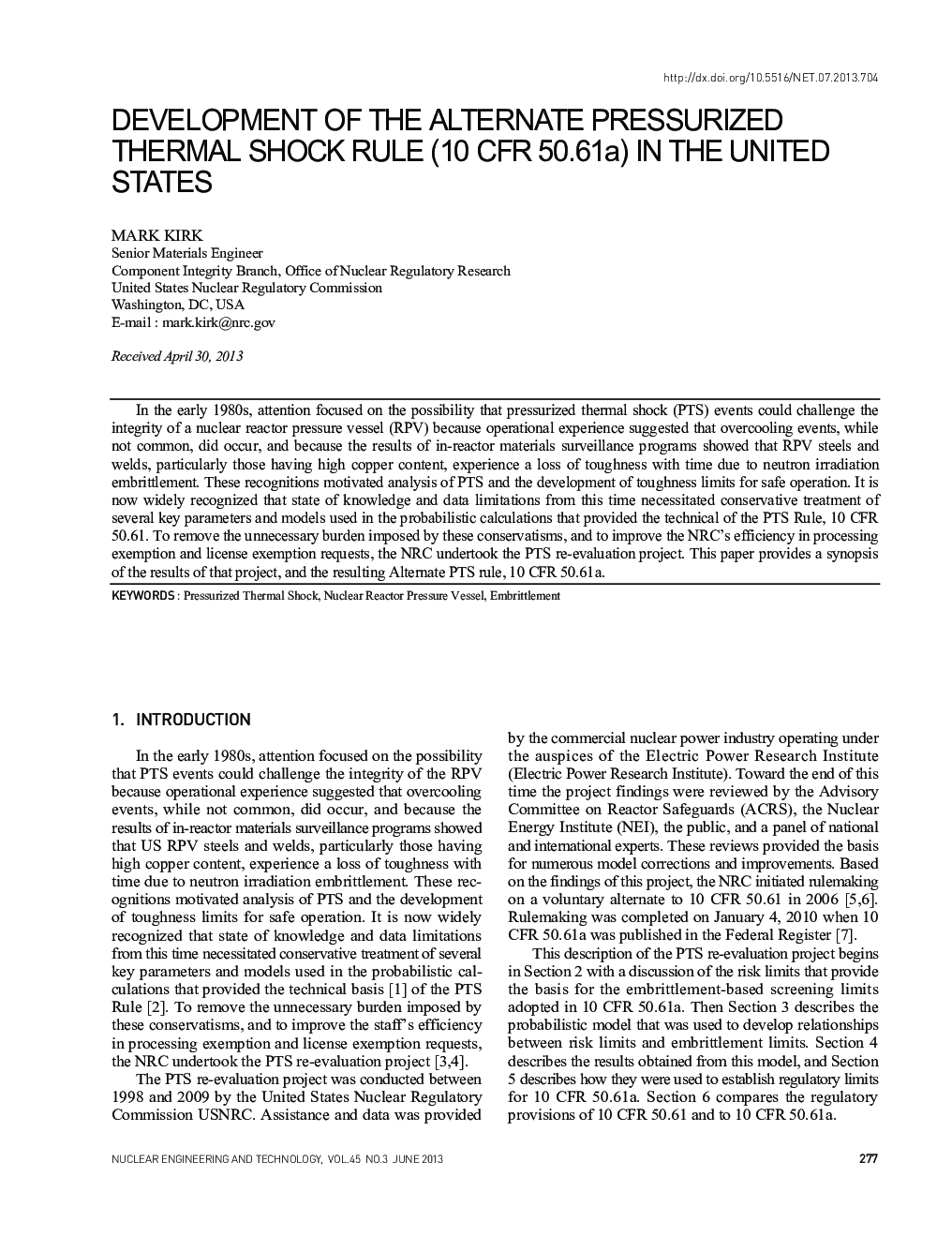| Article ID | Journal | Published Year | Pages | File Type |
|---|---|---|---|---|
| 1740232 | Nuclear Engineering and Technology | 2013 | 18 Pages |
In the early 1980s, attention focused on the possibility that pressurized thermal shock (PTS) events could challenge the integrity of a nuclear reactor pressure vessel (RPV) because operational experience suggested that overcooling events, while not common, did occur, and because the results of in-reactor materials surveillance programs showed that RPV steels and welds, particularly those having high copper content, experience a loss of toughness with time due to neutron irradiation embrittlement. These recognitions motivated analysis of PTS and the development of toughness limits for safe operation. It is now widely recognized that state of knowledge and data limitations from this time necessitated conservative treatment of several key parameters and models used in the probabilistic calculations that provided the technical of the PTS Rule, 10 CFR 50.61. To remove the unnecessary burden imposed by these conservatisms, and to improve the NRC's efficiency in processing exemption and license exemption requests, the NRC undertook the PTS re-evaluation project. This paper provides a synopsis of the results of that project, and the resulting Alternate PTS rule, 10 CFR 50.61a.
